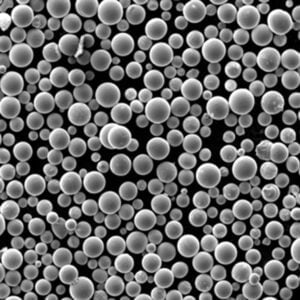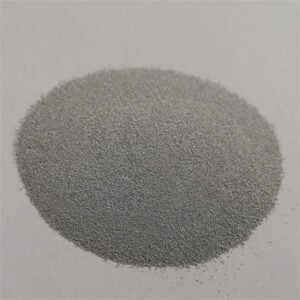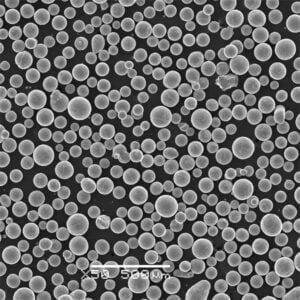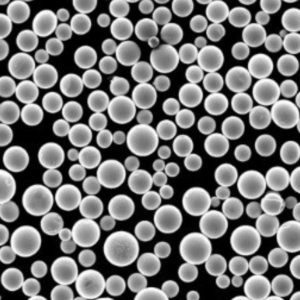チタン・アルミニウム合金
目次
概要
チタン・アルミニウム合金 チタンとアルミニウムの混合物を含む金属材料の一種です。軽量で強度が高く、高温での耐腐食性および耐酸化性に優れています。
TiAl 合金は、そのユニークな特性の組み合わせにより、航空宇宙および自動車用途の重要な高温構造材料と考えられています。密度が低いため、ニッケルベースの超合金よりも軽量でありながら、750°C までの温度で強度と安定性を維持します。
主な特性 チタン・アルミニウム合金
| プロパティ | 説明 |
|---|---|
| 密度 | 3.7 – 4.1 g/cm3、ニッケル合金よりはるかに低い |
| 強さ | 750°Cまでの温度でも高い強度を維持 |
| 硬さ | 約160GPaの高弾性率 |
| 延性 | 室温では脆いが、高温になると延性が高まる |
| 耐食性 | チタンの存在により優れた耐腐食性 |
| 耐酸化性 | 保護酸化層を形成し、750°Cまでの優れた耐酸化性を実現します。 |
| コスト | チタン合金より高価だがニッケル合金より安価 |
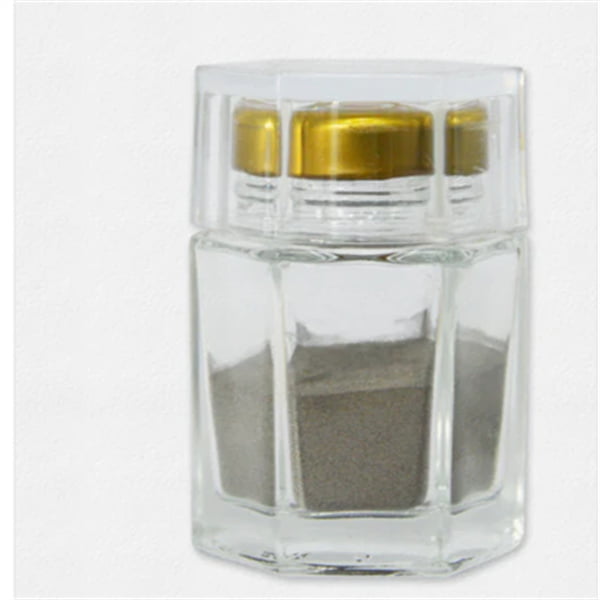
チタンアルミニウム合金の種類
チタンアルミニウム合金には主に 2 つの種類があります。
ガンマTiAl合金
ガンマ TiAl 合金は層状の微細構造を持ち、約 45-48% のチタンと残りはアルミニウムで構成されています。特性を強化するために、ニオブ、炭素、ホウ素、クロムなどの元素も少量添加されています。
ガンマ相 TiAl 合金は、低密度、強度、延性、耐酸化性のバランスが良好で、最も広く使用されている TiAl 合金です。
アルファ-2 Ti3Al合金
アルファ-2 Ti3Al 合金には約 25% のアルミニウムが含まれており、六方晶構造を持っています。引張強度は非常に高いですが、ガンマ TiAl 合金に比べると延性と破壊靭性は低くなります。
アルファ 2 合金は通常、ターボチャージャーなどの 800°C を超える非常に高温の用途で使用されます。
構成 チタン・アルミニウム合金
チタンアルミニウム合金には、チタンが主成分として含まれており、アルミニウムと少量の他の元素が含まれています。一般的な成分範囲は次のとおりです。
| 合金元素 | 組成範囲 | 役割 |
|---|---|---|
| チタン(Ti) | 52-56% | 主な基本要素 |
| アルミニウム(Al) | 44-48% | 主な合金元素はTi |
| ニオブ | 最大2% | 強度と耐クリープ性の向上 |
| クロム(Cr) | 最大2% | 耐酸化性の向上 |
| ホウ素(B) | 最大0.2% | 延性の向上 |
| カーボン(C) | 最大0.1% | 強度を増す |
| ケイ素 (Si) | 0.1-1% | 耐酸化性の向上 |
| タングステン(W) | 0.1-1% | 粒度を細かくする |
| モリブデン (Mo) | 0.1-1% | 強度を増す |
合金元素の割合は、合金の適切な微細構造と特性を実現するために正確に制御されます。
チタンアルミニウム合金の主な特性
チタンアルミニウム合金の強度特性
| プロパティ | 価値 | 説明 |
|---|---|---|
| 引張強度 | 500 – 1100 MPa | チタン合金に比べて非常に高い強度 |
| 降伏強さ(0.2%オフセット) | 400~1000MPa | 合金の弾性強度の測定 |
| 圧縮強度 | 600 – 1500 MPa | 優れた圧縮強度 |
| クリープ強度 | 100 – 350 MPa | 高温での負荷に耐える能力 |
| 破壊靭性 | 15 – 35 MPa√m | 亀裂伝播に対する耐性はニッケル合金よりも低い |
物理的性質
| プロパティ | 価値 |
|---|---|
| 密度 | 3.7 – 4.1 g/cm3 |
| 融点 | 1360°C – 1460°C |
| 熱伝導率 | 6 – 25 W/mK |
| 電気抵抗率 | 150 – 250 μΩ.cm |
| 熱膨張係数 | 11 – 13 x 10 -6 /K |
室温での機械的特性
| プロパティ | 価値 | 説明 |
|---|---|---|
| 硬度 | 300~400HV | へこみに対する抵抗の測定 |
| ヤング率 | 150 – 160 GPa | 硬さの測定 |
| せん断弾性率 | 60 – 65GPa | 剛性の測定 |
| ポアソン比 | 0.25 – 0.34 | 加えられた荷重に垂直な方向と平行な方向のひずみに関する比率 |
| 加工性 | 難しい | 鋼に比べて機械加工が難しい |
用途と使用法 チタン・アルミニウム合金
チタンアルミニウム合金は、幅広い高性能エンジニアリング アプリケーションで使用されています。主な用途は次のとおりです。
航空宇宙産業における用途
- ブレード、ディスク、吸気口カウルなどの航空機エンジン部品
- 高速航空機の機体と翼の構造
- 軽量と耐熱性を兼ね備えた宇宙船部品
自動車産業での使用
- ターボチャージャーのタービンホイールとハウジング
- 高性能エンジンのコネクティングロッド、バルブ、スプリング、ファスナー
- コンロッドやバルブなどのモータースポーツ部品
その他の用途
- ガスタービンエンジン部品、発電および海洋用途
- 人工股関節などの生体医療用インプラント
- 自転車のフレーム、ゴルフクラブなどのスポーツ用品
以下に、チタンアルミニウム合金の使用と代替品の使用の比較を示します。
| 申し込み | TiAl合金 | 代替材料 |
|---|---|---|
| 航空機エンジン | ✅ 750°Cまでの優れた強度対重量比により、ブレード、ベーン、シャフトに適しています。 | ニッケル超合金は耐熱性が高いが、重量が重い。 |
| 自動車用ターボチャージャー | ✅ ニッケル合金よりも高い強度、耐熱性、低密度のバランスが良好 | ニッケル合金はより高いピーク温度に耐えることができる |
| 機体 | ✅ 20-35% は、飛行機の翼、尾翼、胴体に適した同等の強度を持ちながらチタン合金よりも軽量です。 | チタン合金は高い破壊靭性を提供する |
| バイオメディカル・インプラント | ✅ 人間の骨に自然に結合できるチタンが含まれています | ステンレス鋼、コバルトクロム合金もよく使用される |
業界標準と仕様
チタンアルミニウム合金の業界標準として広く使用されているものは次のとおりです。
| スタンダード | 説明 |
|---|---|
| AMS 4928 | ガンマチタンアルミナイド合金シート、ストリップ、プレートの標準仕様 |
| 4965 の | 粉末冶金法で処理されたガンマチタンアルミナイド合金の規格 |
| 4972 号 | アルファベータまたはベータチタンアルミナイドの棒、ロッド、ワイヤの標準仕様 |
| 21365 規格 | 構造用ガンマTiAl合金の仕様 |
| ASTM B381 | 外科用インプラント用チタン・アルミニウム・バナジウム合金の標準分類 |
合金製品は、化学、微細構造、機械的特性に関するさまざまな基準を満たすさまざまなグレードで提供されています。
一般的なチタンアルミニウムのグレードは次のとおりです。
- Ti-48Al-2W-0.5Si(AMS 4928)
- Ti-47Al-2Cr-2Nb(ISO 21365グレード5)
- Ti-45Al-5Nb-0.2C-0.2B(AMS 4965グレード5)
サプライヤーとコスト
チタンアルミニウム合金の世界的な大手サプライヤーには以下のものがあります。
| サプライヤー | 対象学年 | 生産方法 |
|---|---|---|
| VSMPO | チタン-47Al-2Cr-2Nb<br>チタン-48Al-2Cr-2Nb-1Ta-0.7W | インベストメント鋳造<br>鍛造 |
| エーティーアイ | チタン-48Al-2W-0.5Si<br>チタン-47Al-2Cr-2Nb | 精密鋳造<br>粉末冶金 |
| プレシジョン・キャストパーツ社 | カスタム合金 | インベストメント鋳造 |
| プランゼー | TiAlガンマ合金 | 粉末冶金 |
チタンアルミニウム合金はチタン合金よりも高価ですが、ニッケルベースの超合金よりも安価です。一般的な価格の見積もりは次のとおりです。
| グレード | 価格見積もり |
|---|---|
| チタン-48Al-2Cr-2Nb | $85 – $125 / kg |
| チタン-47Al-2W-0.5Si | $100〜$150/kg |
| カスタムTiAl合金 | $150 – $250 / kg |
価格は、注文量、サイズ仕様、認証要件、その他のカスタマイズによって異なります。
チタンアルミニウム合金の利点と限界
メリットと利点
- 非常に高い比強度 - 高い強度対重量比
- 750°Cまで優れた強度保持
- 優れた耐環境性 - 酸化、燃焼、腐食
- ニッケルやコバルトの超合金よりも低コスト
- 鍛造、圧延のための熱間加工性
欠点と限界
- 加工の難しさ - 熱間加工と機械加工
- 室温での脆性挙動
- 比較的低い破壊靭性
- 最高使用温度は750°Cに制限されています
- 水素と水分を吸収する
代替案と比較した利点と欠点の比較は次のとおりです。
| パラメータ | TiAl合金 | ニッケル超合金 | チタン合金 |
|---|---|---|---|
| 高温強度 | 750℃まで良好 | ✅ 900°C以上でも優れています | 500℃以上では不良 |
| 密度 | ✅ 最低 | より高い | 比較可能 |
| 耐酸化性 | 750℃まで良好 | ✅ 800°C以上で最適 | 550°C以上では不良 |
| コスト | ✅ 下 | 最高 | より高い |
| 作業性 | 貧しい | グッド | ✅ 最高 |
| ダメージ耐性 | 貧しい | グッド | ✅ 素晴らしい |
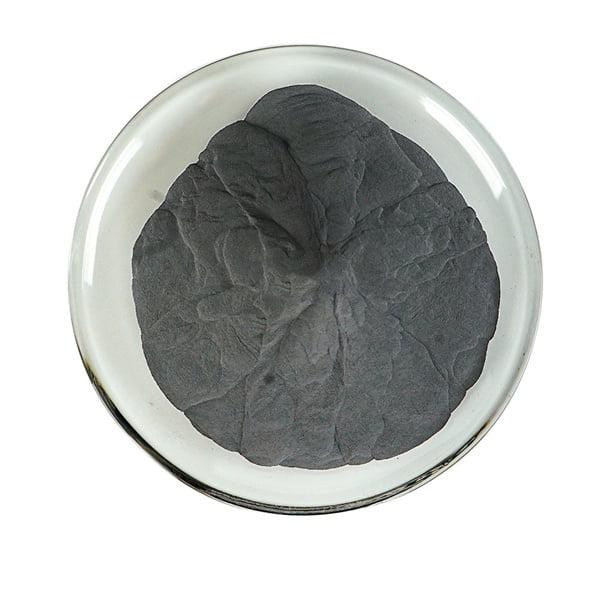
よくあるご質問
Q: ガンマチタンアルミナイドとは何ですか?
A: ガンマ TiAl アルミナイドは、チタン (Ti) とアルミニウム (Al) を含むガンマ (γ) 相結晶構造の金属間合金です。Ti 原子と Al 原子が規則的に層状に配列しています。ガンマ TiAl は最も一般的に使用される合金タイプです。
Q: TiAl 合金が航空宇宙用途に考慮されるのはなぜですか?
A: TiAl 合金は、低密度と 750°C までの優れた機械的特性の優れた組み合わせを提供します。これにより、はるかに重いニッケル合金の代わりに TiAl を使用して、より軽量で効率的な航空エンジン部品を設計できます。
Q: TiAl ターボチャージャー部品の例にはどのようなものがありますか?
A: TiAl 合金は、高性能ディーゼル車やガソリン車のエンジンのターボチャージャー ホイールやハウジングの製造にますます使用されています。低密度と耐熱性により、より高い出力密度と効率が得られます。
Q: TiAl 合金を使用する際の主な課題は何ですか?
A: 鋳造、鍛造、機械加工による加工の難しさ、常温での脆さ、競合合金に比べて損傷許容度が低いことが採用の障壁となっています。しかし、加工方法と合金開発は進歩し続けています。
Q: TiAl 合金の一般的な酸素含有量の制限はどれくらいですか?
A: TiAl 合金では酸素は 0.2% 未満に制限されています。酸素レベルが高いと延性に悪影響を及ぼします。酸素吸収を制御するために、高度な溶解および鋳造方法が使用されます。
シェアする
MET3DP Technology Co., LTDは、中国青島に本社を置く積層造形ソリューションのリーディングプロバイダーです。弊社は3Dプリンティング装置と工業用途の高性能金属粉末を専門としています。
関連記事
Met3DPについて
最新情報
製品

3Dプリンティングと積層造形用金属粉末






